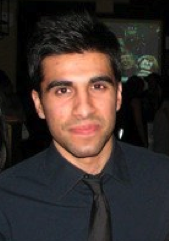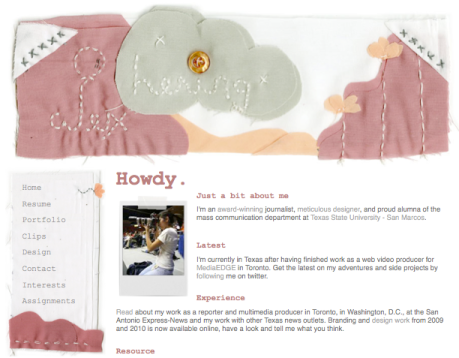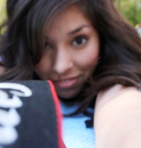Advice from Gerald Deo
This slideshow requires JavaScript.
Your camera doesn’t matter.
This is maybe the most ridiculous thing to say when you’re writing a blog post about how to pick the right camera, but it’s also arguably the most important and I wouldn’t want to be accused of burying a lede.
As imaging hardware gets better, more and more of it crosses the “good enough” threshold for the needs of web, print, and multimedia journalism. The third-place story in the Pictures of the Year International competition was shot on an iPhone, using a free app called Hipstamatic.
That said, here’s what to look for in a camera: it needs to fit your hands, your needs, and your budget.
If it’s too heavy, an awkward shape, or has terrible ergonomics, it’s no good for your hands; you’ll never use it. If you require a discreet camera, or a sturdy one, or one with unusual features to fit your workflow (3D? High-def video? Waterproofing?), make sure the gear you choose includes said features; if the camera doesn’t fit your needs, you’ll never take it with you. If it doesn’t fit your budget, you’ll never buy it, and you can’t take pictures with a camera you don’t have.
There’s no one camera that suits everybody.
(Or we’d all have it, and this sort of post would be more moot and less frequent,) so make use of your resources when it does come time to pick one.
Professional and user reviews can reveal a lot about a camera, and hands-on time is absolutely necessary, even with a dummy body tethered to a post; buying a camera without picking it up and holding it to your eye is one of the greater disservices you can do yourself when camera shopping. Consider your habits (good and bad), and where possible, account for the growing you’ll do as a photographer and get a camera with some level of manual control (if not a full-blown manual mode.)
Don’t relax, just yet.
You’ve got a camera, but that doesn’t mean you know how to use it.
This seems crazy, but bear with me: if you have your eye up to an eyepiece as you follow a scene and need to change a setting on top of the camera, what do you do? Breaking concentration could lose you a shot, and shooting with the wrong settings could let you get a shot, but not the one you needed.
Learn to make the changes you’ll need without having to reorient the camera or break your concentration on a subject — or get used to losing a lot of the shots you wanted (and, in all likelihood, the respect of your editors.)
Once you get the hang of using the camera without looking at it, tweak the settings until it feels right. After all, it’s nobody’s camera but yours, so adjust it until you’re comfortable. Just like the hardware needs to fit in your hands with minimal discomfort, changing settings lets software go from “this camera I bought” to “this camera of mine,” and again: if you’re not going to use the camera because you don’t like the way it works, then you’re not going to get the shots you need/want.
Don’t let your camera make all the decisions.
Now that you can work it without looking, and the settings are to your liking, let’s make things a little more challenging. It’s easy to knock the camera into full-auto mode, and let it make decisions about how the light and dark parts of a scene should balance out, and what tint there might be on the lights inside the photo, and what should be in or out of focus.
It’s hard to make those decisions, and also challenging to figure out what changes to make to settings in order to ensure that what you want to happen is actually what’s going to happen. But as you get more comfortable doing adjusting your settings, you’re taking more control of how your shots turn out. That’s not to say there isn’t a place for automatic modes, or those hybrid settings that allow you to control one variable while choosing the others algorithmically; just that you should be able to get by without them in order to get the most out of them.
It gets easier with time and perseverance.
So now what? You’ve got a camera and a little knowledge on how to use it, (which is more dangerous than none, proverbially,) and to increase that comfort and depth of knowledge, there are three things you can do.
Queue up as many feeds as you can stand from people whose output you enjoy
These people aren’t necessarily photographers but also writers, journalists, scientists, and whoever else tickles your fancy. Read books, RSS feeds, and Twitter output with equal voracity. Deepen your perspectives and learn to see the same scene in multiple ways, and then to apply seeing the scene into portraying the same scene in different ways. Being well-rounded also gives you a foundation to build a rapport with subjects and there’s no harm in that; it could lead to a show-stopper of a shot, or to even more.
More likely, though, especially as you’re starting out, is that you’ll botch a lot of shots. This will lead to an editing process akin to pulling diamonds from the earth. Although the shots may not work for the assignment you’re on, figuring out where the gap between intention and execution lay can help you get the shots you actually want in the future.
Whether the feedback is good or bad, you want it to be specific.
Now that you’re taking photos (and hopefully the ones you want) the next step is to get feedback to make your photos better. One of the best practices I’ve picked up about feedback (on photos but also on pretty much everything) is to ask for specifics, whether the feedback is positive or negative. Specific feedback lets the recipient know exactly what they’re doing well or need to work on. And when you’re giving pointers to another photographer, be careful to focus on the effect, because you’re doing this to help them get better and burning bridges by insulting someone is going to be harmful to you both in the long run. Take the feedback you receive, and incorporate it into your self-knowledge and workflows, but don’t be ruled by it.
That was a lot, given that this was originally a short post about picking cameras, but there you have it.
Remember: don’t be afraid to make mistakes, just be sure to make interesting ones.”
About Gerald

Gerald Deo
- Name: Gerald Deo (a.k.a. “Man with Camera)
- J-school: none.
- Publications: the Ubyssey, Discorder, Exclaim!, Canadian Immigrant, ricepaper.
- Platforms: @heeeraldo on twitter (and tumblr but that’s not for work.)
- Website and sample work: giant-squid.ca















